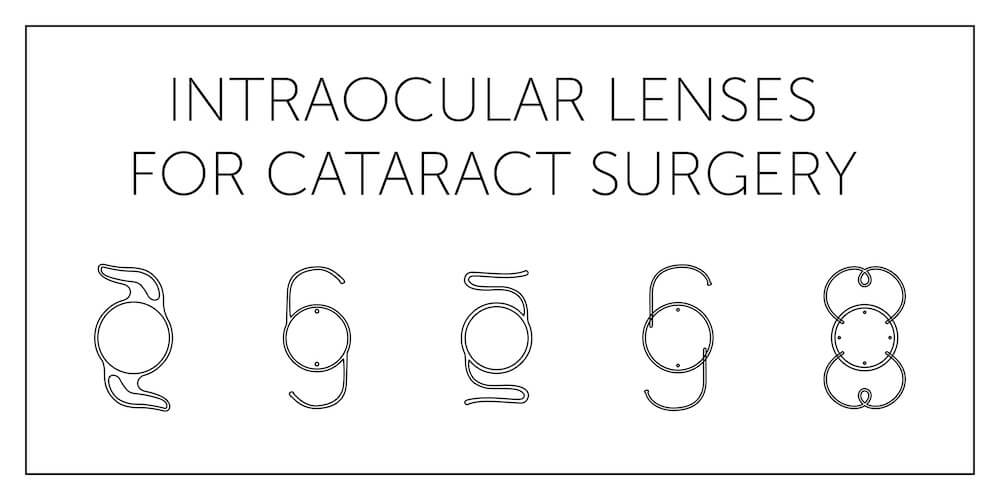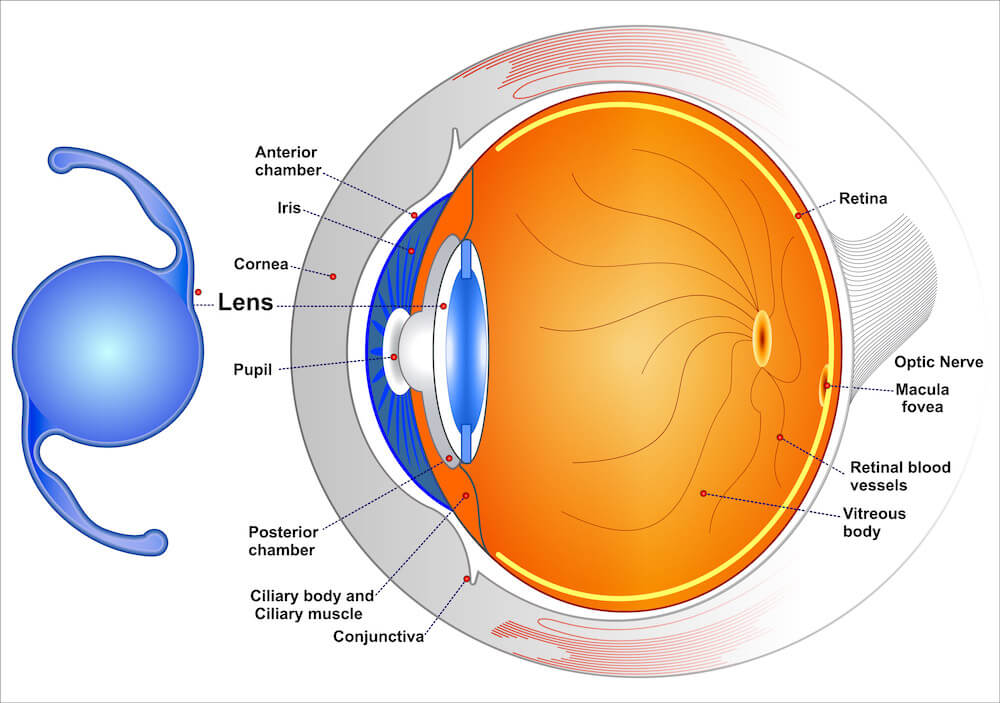
As we age, the natural Lens of our eye becomes cloudy, which prevents the light rays from focusing clearly on the back of the eye. When the natural lens becomes less transparent or cloudy, it is referred to as a cataract. Images are no longer clear and sharp. This visual loss can be mild or quite severe. Eyeglasses or contact lenses can correct a cataract in the early stages, but cannot correct vision once the majority of the lens loses transparency. Cataracts can cause many issues including difficulty with driving or reading, causing haziness and glare with sunlight or halos around lights at night. A cataract may develop in only one eye and can decrease the ability to judge distances. Colors may have less intensity and images may have a yellowish cast. Frequent changes in eyeglasses prescriptions may occur or even double vision. Here are some important points about cataracts: All people will develop cataracts if they live long enough. Cataracts are not cancerous or contagious. Reading, watching T.V., or eye strain does not cause cataracts. A cataract is a clouding of the lens inside the eye, not a growth or film on the surface of the eye. Cataract formation occurs differently in each person and also in each eye.

Common cataract symptoms include increasingly blurred vision, halos around light, glare, difficulty seeing at night, double vision, and reduced color perception. Almost everyone has at least some form of clouding in the lens of the eye over the age of 70, but diabetes, heart disease, or history of eye trauma or eye surgery may speed up the clouding process of the lens.
Once a cataract starts changing your vision enough to affect everyday activities, it is time to treat it since it will only get worse. Currently the only medical treatment for cataracts is to have them surgically removed.Surgically removing a cataract is usually done on an outpatient basis and involves making an incision into the capsule of the cataractous lens to remove the lens. A topical or local anesthetic will be applied, as well as dilating eye drops and/or a sedative, to make the operation painless. Refractive cataract surgery removes the cataracts, and then replaces your natural lens with an intraocular lens (IOL) implant, capable of reducing your dependence on corrective eyewear such as glasses or contacts. Our physicians can talk with you about your lens replacement options at your initial cataract surgery consultation. Cataract surgery is one of the most common procedure in the United States and normal activities can be resumed in a couple of days.
When your cataract (cloudy human lens) is removed, it is alike to a camera taking a photograph without a lens; the photo would be blurry. Therefore, anyone undergoing cataract extraction receives a new, man-made lens, called an intraocular lens (IOL), to replace their natural lens.
IOLs are permanent and maintenance free. You cannot feel them, you will never have to clean them, and unlike your natural lens, they stay clear indefinitely. The size, shape, design, material and prescription will be chosen by your doctor especially for you.

When your cataract (cloudy human lens) is removed, it is alike to a camera taking a photograph without a lens; the photo would be blurry. Therefore, anyone undergoing cataract extraction receives a new, man-made lens, called an intraocular lens (IOL), to replace their natural lens. IOLs are permanent and maintenance free. You cannot feel them, you will never have to clean them, and unlike your natural lens, they stay clear indefinitely. The size, shape, design, material and prescription will be chosen by your doctor especially for you.

Cataract surgery is one of the safest and most effective vision correction surgeries available. IOL implantation makes it possible for those with cataracts and age-related eye problems to enjoy the best vision of their lives. Please contact an ophthalmologist at Katzen Eye Care and Laser Center today, if you’d like to determine your candidacy for cataract surgery with intraocular lenses. Our doctors will evaluate your eyes to ascertain which one of the many intraocular lenses available may be right for you.

Your first appointment is typically a Cataract Evaluation or a Complete Eye Exam. During your evaluation, your eyes will be fully examined. Your surgeon, Dr. Luchs, will determine if cataract surgery is needed. A recommendation will be given to you, by your surgeon, on the lens that would best suit your lifestyle and anatomy. The patient will meet the counselor and she will explain all the options of lenses, fees, and necessary documentation in order to schedule the procedure. The second appointment is the Testing Day. At the second appointment, a series of measurements will be taken of your eyes depending on the lens that the patient has chosen. The patient meets with the counselor to go over informed consents, drops, and payment. Every patient is required to have a medical clearance by a medical doctor. At this point...Congratulations you are ready to have your Cataract surgery!
About 2 hours, including diagnostic procedures.
A cataract may be removed surgically with surgical instruments or with a femtosecond laser. At Katzen Eye Care & Laser Center both technologies are utilized successfully in the removal of cataracts. The LenSx femtosecond laser is used to create incisions and reduce astigmatism without blades with the precision of a laser. An advanced computer-guidance system, controlled by one of our experienced cataract surgeons, directs the laser over the eye to provide the most precise and accurate results for each individual patient. This makes it possible for the successful combination of the surgeon’s skills with state-of-the-art technology to produce extraordinary results. The LenSx® femtosecond laser may also be able to better manage astigmatism than other types of cataract surgery.
Dr. Luchs uses the ORA system (Optiwave Refractive Analysis) during cataract surgery to customize a patient’s cataract treatment. This technology is designed to help calculate the appropriate intraocular lens implant for each individual patient. Selecting the right intraocular lens, IOL, is critical to achieve the best possible vision without the need for prescription glasses. With the ORA system, patients can be confident that they will be receiving the best possible vision after cataract surgery.
In general, cataract surgery will take approximately 10-15 minutes. You should experience no pain, before, during or after your surgery.
Cataract surgery is done one eye at a time. Your surgeon will want to see how the first eye reacts to the procedure before doing surgery on the other one. By doing one eye at a time, it also enables the patient to still see and maneuver without any vision impairment.
The best way for a patient to regain natural vision after cataract surgery is to permanently place an intraocular lens or IOL, inside the eye. This lens implant will replace the focusing power of the natural lens and make peripheral vision and image size back to normal. The lens implant is made of plastic, acrylic, or silicone and is placed in the same position as the original lens of the eye. Because the lens is inside the eye, there is no discomfort.
Cataract surgery has improved and advanced dramatically during the last decade. Dr. Luchs can now offer our cataract surgery patients the opportunity to choose from high technology lifestyle intraocular lenses designed to correct far and near distances, as well as, astigmatism. These implants can reduce or eliminate the need for distance and reading glasses. Patient’s lifestyle, needs, and anatomy of the eye are carefully evaluated before our surgeons give their recommendation choices. For more information in the various lens types, please request an appointment or call. Dr. Luchs will be happy to discuss the laser cataract technology with our patients. They will explain the advantages of traditional versus laser and which technology suits our patients best on an individual basis.
7593 W. Boynton Beach Blvd.
Suite #280
Boynton Beach, FL 33437

Florida Vision Institute
1515 N. Flagler Dr. Suite 500
West Palm Beach, FL 33401